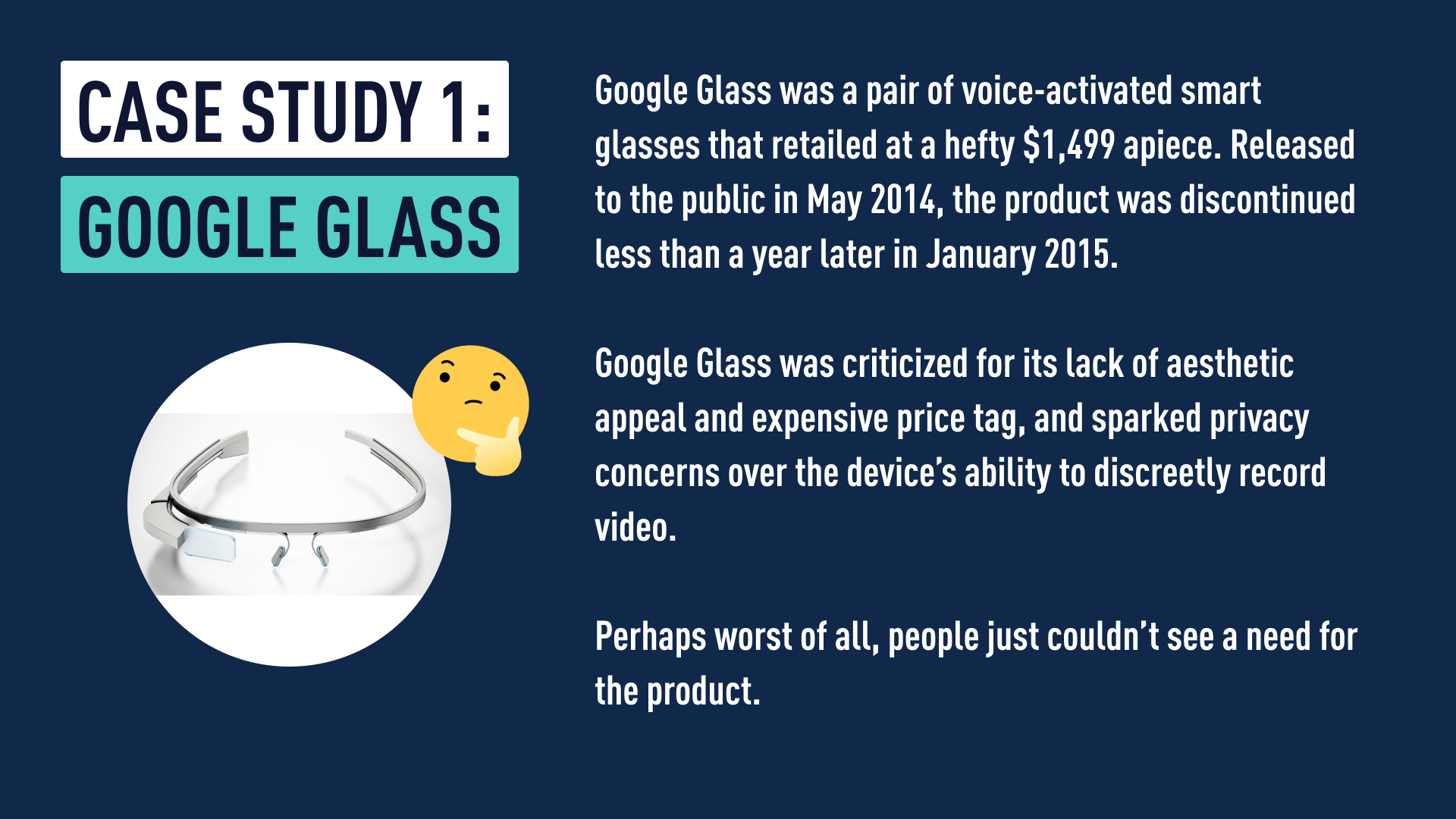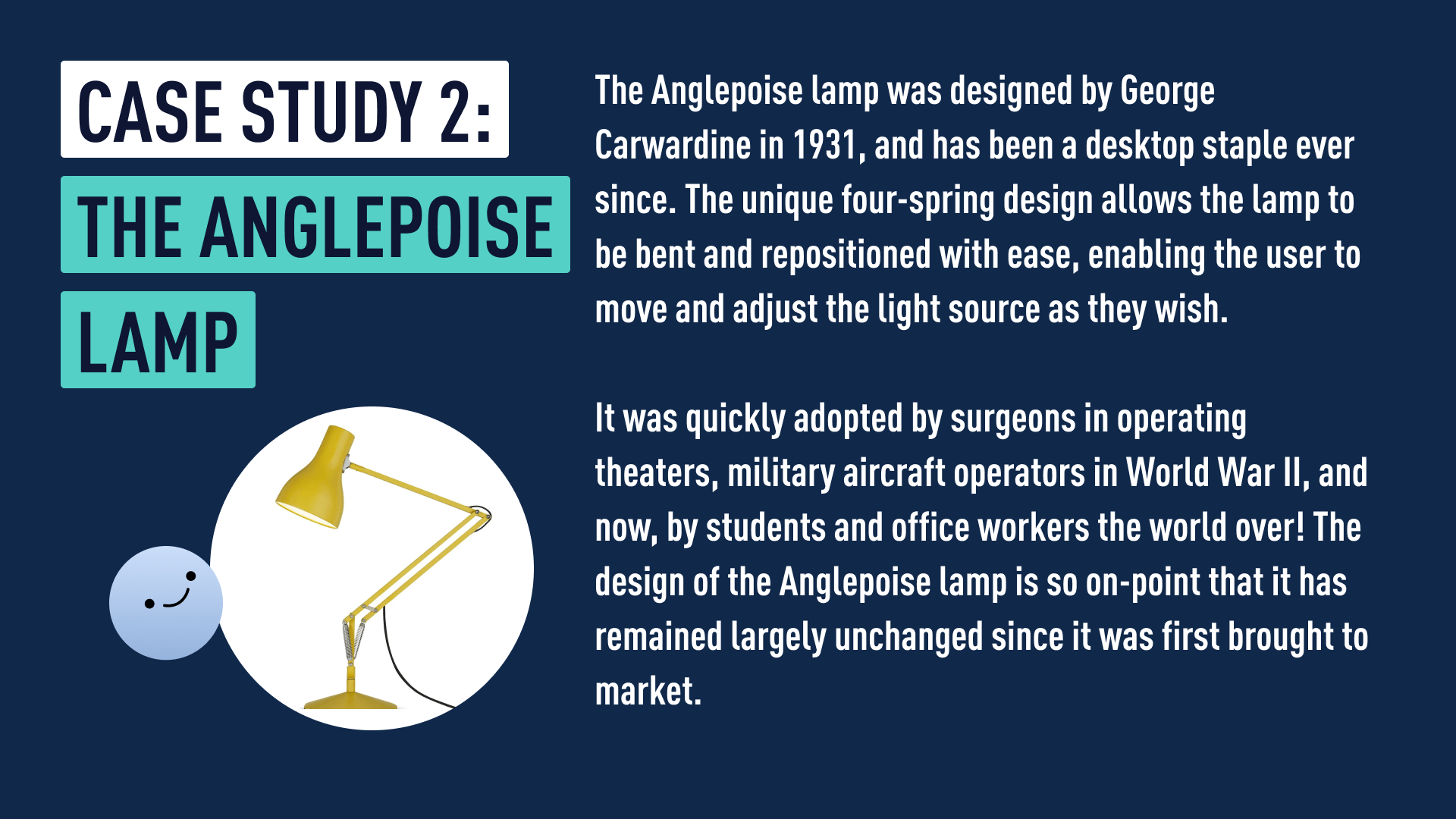Hi there! And a very warm welcome to your Product Design Short Course 😊
The product design industry is growing at a rapid rate, so now is a great time to learn more about the field. In this free short course, you’ll work your way through five tutorials—gaining valuable insight into what product design is, why it matters, and what it’s like to work as a product designer. Sound good? Then let’s begin!
What will you learn in this course?
In the space of five beginner-friendly tutorials, you’ll gain a solid introduction to product design—both as a discipline and a career path.
Here’s what you’ll learn:
- Tutorial 1: What Is Product Design?
- Tutorial 2: What Does a Product Designer Do?
- Tutorial 3: An Introduction to the Product Design Process
- Tutorial 4: Product Design Tools and the Role of AI
- Tutorial 5: Why Become a Product Designer? (And How To Get Started)
Each tutorial features a written lesson, a practical exercise, and a short multiple-choice quiz. Once you’ve worked your way through all five tutorials, you’ll complete one final quiz to recap what you’ve learned 🧑🎓
The goal is to introduce you to the world of product design, to give you an idea of what it’s like to work in the field, and to help you determine if this is a career path you might like to pursue.
If, by the end of this course, you’re itching to become a product designer, you can continue your journey with the CareerFoundry Product Design Program.
CareerFoundry is an online career academy for aspiring tech professionals. Our career-change programs teach you the skills of in-demand professions (like product design!) to stay ahead of the job market and launch a career in tech that lasts.
With a practical, skills-focused curriculum, you’ll work in partnership with expert mentors career specialists to get job-ready for a career as a product designer. You can get extra peace of mind knowing that all of our programs are backed up by our job guarantee. If we can’t help you land a job within six months of graduating, you could be eligible for a refund on your tuition. That’s how strongly we believe in the quality of our programs—and in your ability to successfully switch careers 💪
Ok, introductions done! ✅ Let’s get going with our first tutorial.
Tutorial 1: What’s in store?
In this tutorial, we’ll explain what product design is, where it comes from, and how it differs from other design disciplines. This will set the scene for the rest of the course, introducing fundamental concepts and giving you a first glimpse into why product design is such an interesting industry. We’ll round off the lesson with a practical exercise and a short quiz.
Here’s what we’ll cover today:
- What is product design?
- What are the fundamental principles and concepts of product design?
- [Where does product design come from? A brief history](#3-where-does-product-design- come-from-a-brief-history)
- The present and future of the product design industry
- Practical exercise: Good vs. bad product design
If you have questions or feedback along the way, you can simply reply to any of the course emails you receive to share your thoughts with us. We’d love to hear from you 😊
1. What is product design?
Product design is a cross-functional discipline that sits right at the junction of design and business. It involves identifying gaps and opportunities in the target market and conceiving and designing products that successfully fill those gaps.
Product design is both strategic and user-centric. It’s not just about designing a great product; it’s also about understanding why that product needs to be built in the first place. It encompasses:
- Extensive market research and competitor analysis
- Thorough user research to understand the target audience
- Problem-solving and design thinking—coming up with solutions that meet the end users’ needs
- Design, testing, and iteration—actually bringing the product to life and making sure it’s fit for purpose
- Strategy and big-picture thinking—ensuring that the product vision aligns with, and serves, the business vision
Note that when we talk about product design, the product in question could be a physical product, like a coffee machine, or a digital product such as an app, website, or software. It can even relate to the design of intangible experiences or processes—like going into a bank to open a new account.
What’s the difference between product design, industrial design, and UX design?
Having read our definition of product design, you might be thinking that it sounds suspiciously similar to some other design disciplines…🤔
And you wouldn’t be entirely mistaken. There is indeed plenty of overlap between product design and industrial design, and between product design and UX design. But, despite many similarities, they aren’t the same thing.
- Product design vs. industrial design: Product design actually emerged as a subset of industrial design (as you’ll find out in Section Three where we outline the history of product design). The main difference between the two is that industrial design focuses on physical products (think household appliances, medical devices, and sports equipment) while product design encompasses both physical and digital products, as well as intangible experiences.
- Product design vs. user experience (UX) design: Both product design and UX design are concerned with solving user problems and designing functional, usable, user-friendly products. But, while UX design hones in on the design of the product itself, product design is more holistic and all-encompassing. It considers not only the design of the product, but also the context surrounding it. Where does the product fit into the market? Is it viable and worthwhile from a business perspective? You can learn more about the difference between UX design and product design in this guide.

That’s product design in a nutshell. With a working definition in place, let’s move on to the next section! 👇
2. What are the fundamental principles and concepts of product design?
The ultimate goal of product design is to conceive and design products that fill a gap in the market, solve a specific problem for the user, and present a good business opportunity.
That’s a lot to think about! 🤯 So how do product designers achieve that and make sure they’re ticking all the boxes? Here are the main concepts and principles that inform their work:
- User-centered design and design thinking. Product design is steeped in design thinking—a user-centric approach to solving complex problems. Often, product designers will follow the design thinking framework to ensure that they truly understand their users’ needs and are designing to meet them.
- Desirability. Before proceeding with an idea, product designers must determine whether or not the proposed product is truly desirable. In other words, is the product something that your target users really want? Is there a genuine need for this product on the market, now and in the future?
- Viability. This weighs up how much sense the product makes from a business perspective. Is it financially sustainable? Will it drive revenue and growth and/or contribute to the achievement of key business objectives?
- Feasibility. This considers whether or not it’s technically and practically possible to create the product. Do you have the necessary resources, time, budget, expertise, and technology to bring this product to life?
- Form. When it comes to actually creating the product, product designers must pay close attention to form. That’s everything to do with the shape, structure, layout, look, and feel of the product. When designing a website, for example, the layout and visual design of the screens all shape the form of the product. For a physical product, like a hairdryer, form is determined by the ergonomics of the product and the materials used.
- Function. You’ll often hear the phrase “Form follows function”—and that’s because any good product must be designed in a way that facilitates its core purpose. Take the example of a vacuum cleaner. Its functional purpose is to help you clean your floors. Its form—i.e. its shape and structure—should make that task as easy as possible. The same goes for digital products. If the functional purpose of a website is to enable people to book flights, both the structure and visual properties of the website (form) should be designed with that function in mind.
Ok, so we now know what product design is and the key principles that product designers follow. Not bad! 🙌 Let’s keep the momentum going with a mini history lesson…
3. Where does product design come from? A brief history
Product design stems from industrial design—the design of physical, mass-produced consumer products. Here’s how the field has evolved over time.
1) Pre-Industrial Revolution, products were crafted by hand. This was slow and expensive, so there were fewer products available to buy 🖐️
Before the First Industrial Revolution of the late 1700s, products were crafted painstakingly by hand. Without the help of machinery, the process of designing and manufacturing products was considerably slower and more expensive than it is today. As such, there were far fewer products readily available to buy.
2) With advances in technology and machinery, manufacturers were able to mass-produce their goods—and sell them cheaper 📠
As new machines were invented and technology advanced, manufacturers were able to mass-produce their goods quickly and efficiently for a fraction of the price. This meant that more products were available to buy, and more people could afford to buy them.
3) More products meant tougher competition. Industrial design emerged as a discipline dedicated to making sure that products were functional, user-friendly, and appealing to consumers 🛍️
In a much bigger and more competitive mass market, it was now crucial to create products that were both aesthetically pleasing and worked flawlessly. Cue industrial design: a discipline dedicated entirely to designing and improving the form, functionality, and usability of tangible products.
4) The Digital Revolution and the rise of the Internet expanded the definition of ‘products’ to include websites, apps, software, and intangible experiences. Product design was born! 💻
Then, with the Digital Revolution and the rise of the Internet in the early 1990s, a whole new realm of products opened up. The word "product" no longer related solely to physical objects; it now incorporated digital products and experiences, too.
Of course, digital products also need to be functional, usable, enjoyable, and aesthetically pleasing—and therefore require dedicated designers.
Today, we have industrial design which focuses solely on physical products, and we have product design; a much broader term that includes the design of digital products and intangible experiences.
That’s the brief history of product design. But what about the here and now? What’s the state of the industry today, and how is it expected to evolve in the future? 🔮 Let’s find out.
4. The present and future of the product design industry
Product design is one of the fastest-growing industries right now—a growth that’s driven by increasing and ever-changing consumer demands, rapid technological advancements, and ongoing digital transformation.
In 2022, the product design and development services market size was valued at $9.4 billion. By 2030, it’s projected to reach $24.1 billion. That’s a compound annual growth rate (CAGR) of 12.5% from 2023-2030 😵
Logically, the demand for product designers is also growing. According to Zippia, product designer jobs are projected to increase at a 3% growth rate from 2018-2028. And, with an average salary of $120,000, product designers earn significantly higher than the national average salary of $59,428 across the United States.
Psst! We’ll go into greater detail about how much product designers can earn in Tutorial 5 💰
So, we hope that’s made it clear that it’s an exciting time to join the industry. Not only is the product design field growing; it’s also constantly evolving. With the rise of artificial intelligence (AI), a whole new world of opportunity is opening up for product designers. From large-scale data analysis to generative design, from simulation-based product testing to advanced personalization—the impact of AI is huge 😲 But that’s a topic for another lesson! Tutorial 4, to be precise 😀
That’s the theoretical part of tutorial 1 done. Bravo! 🕺 Let’s finish up with a practical exercise.
5. Practical exercise: Good vs. bad product design
Time to start thinking like a product designer. First, read through these two product design case studies:


Now, based on what you know about the fundamental principles of product design, consider the following:
- The Google Glass case study is an example of bad product design. In what areas did the product design fail?
- The Anglepoise lamp is an example of good product design. What makes it so successful?
- Taking inspiration from the Anglepoise lamp, what could (and should) the product designers behind Google Glass have done differently?
- Can you think of any other examples of good and bad product design? If you need some inspiration, check out these 5 epic consumer product design fails and these 19 iconic examples of influential product design.
We recommend noting your thoughts down as you go ✍️—for this tutorial and also the ones to follow. You can always refer back to any of the tutorials for a refresher (Sections One and Two will be particularly helpful for today’s practical exercise).
It’s a wrap!
That just about concludes our first product design tutorial. Good work! We hope you’ve enjoyed taking your first steps into the world of product design 🥳 Before you go, be sure to recap what you’ve learned with the short, interactive quiz. See you in tutorial 2! 👋
